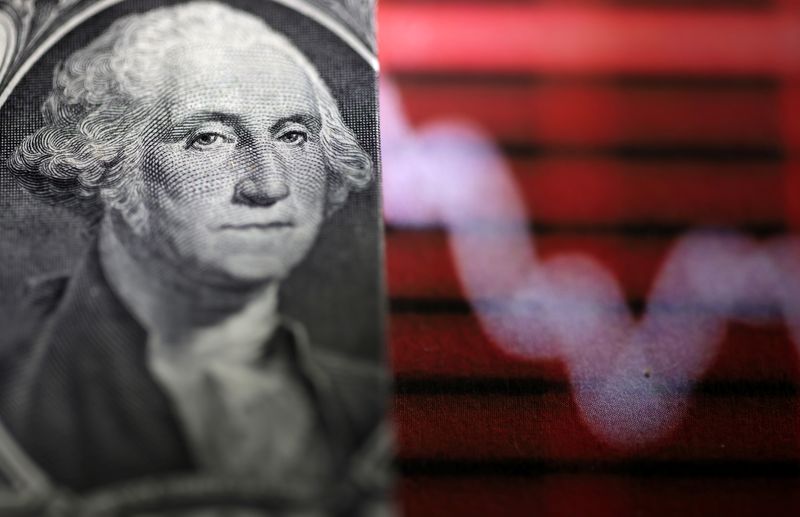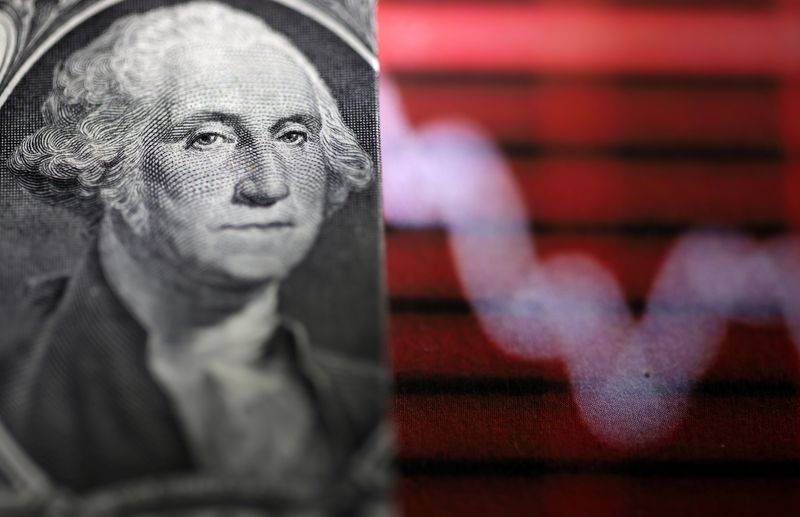
By Jamie McGeever
ORLANDO, Florida (Reuters) – U.S. financial markets last year were more sensitive to economic surprises than usual, and as Donald Trump prepares to begin his second term as U.S. president investors should buckle up for more of the same in 2025.
Especially in Treasuries.
The 10-year yield’s sensitivity to inflation and activity data surprises last year was the highest in more than 20 years, according to Goldman Sachs. Although inflation has fallen, growth fears have ebbed, and the Federal Reserve has started cutting interest rates, these sensitivities persist.
Again, especially in Treasuries.
While equities’ sensitivity to inflation surprises has fallen as price pressures have cooled, it remains high by historical standards. And stocks’ sensitivity to growth surprises, though still modest, has begun to tick up to near pandemic-era levels.
What does this mean for the coming year? While benchmark gauges of implied equity and bond volatility are muted, markets are in a more tenuous position than they were a year ago. By many measures, such as pricing, sentiment and valuations, they are extremely stretched.
U.S. stocks have never been riding higher or represented a bigger share of the global market cap, and the Fed’s 100 basis points of interest rate cuts since September have been met with a counterintuitive 100-basis-point rise in the 10-year Treasury yield.
Does this mean America’s key markets are primed for correction? Maybe. But what’s easier to say with confidence is that we’re going to see wider intra-day trading ranges and short-term reversals as investors contend with the biggest wild card of all: Trump’s agenda.
‘VOLATILITY MAN’
History shows there is a “solid” relationship between macro and market volatility, as Citi’s Stuart Kaiser points out. And with the world still in the dark as to how Trump’s trade and tariff policies will pan out and how the Fed will respond, macro uncertainty is alive and well.
Indeed, the two biggest “tail risks” for world markets cited in Bank of America’s latest fund manager survey were “global trade war triggers recession” and “inflation causes Fed to hike.” Both captured 37% of respondents’ votes, significantly more than the 10% garnered by “geopolitical conflict,” the third most-cited risk.
“With numerous large policy shifts on the horizon, markets should be prepared for a lot more volatility ahead,” Deutsche Bank (ETR:DBKGn)’s George Saravelos said on Monday.
It is true that the initial year of Trump’s first term, 2017, turned out to be a good one for Wall Street, as the S&P 500 index rose 19%, despite Trump’s unpredictable actions. But that was a period of low inflation, low interest rates, and solid growth. Such low macro volatility is unlikely to be replicated this time. And given the stretched nature of today’s markets, even modest economic surprises could spark big moves.
Just look at the sharp swings in U.S. stocks and the dollar on Monday in response to a media report – later dismissed by Trump – implying that his proposed tariff regime would be less severe than feared.
But even if macro “vol” does increase, will it be enough to puncture the generally bullish 2025 market consensus? Perhaps not, suggests Phil Suttle, a Washington-based economist. “(Markets) will be quite volatile but without much significant net direction, as the perceived odds of these different (tariff) scenarios oscillate,” Suttle wrote on Monday in a note titled “Volatility Man.”
It is also possible that investors will increasingly ignore Trump’s social media posts on markets, economic policy or the Fed, as they eventually did in his first term, especially if real-world economic indicators remain stable. But it’s far too early for that right now.
Given the combination of stretched markets and an unpredictable commander in chief, markets will feature a lot of sound and fury in 2025. It could be a bumpy ride.
(The opinions expressed here are those of the author, a columnist for Reuters.)
(By Jamie McGeever; Editing by Paul Simao)

